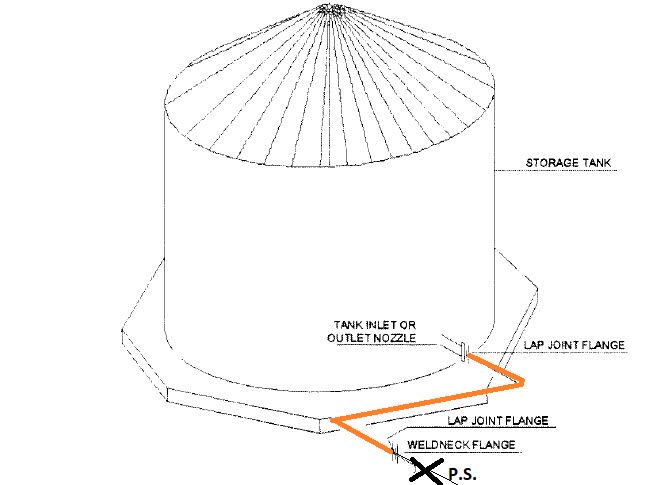Amir Sedieqy
Military
Hello,
I have started similar threat in Pipelines, Piping and Fluid Mechanics engineering Forum, but Littleinch suggested to start it here.
In a piping system connected to the outlet of a crude oil tank, process man has located the expansion joint after the valve which is connected to tank's nozzle. Since this expansion joint is located after the valve, it must be able to withstand the design pressure of the piping system. However, if this expansion valve were located before the valve, and was connected to the tank's nozzle, it should have only withstand the pressure due to fluid height in the tank, which is one-twentieth of the piping design pressure. I was wondering whether it is practical to connect the expansion joint directly to the tank's nozzle. I'm aware of the risk of not being able to isolate the tank in case of expansion joint failure. however, since this expansion joint is only for settlement issue, its life cycle is very low. Therefore, I'm not sure that its failure is likely. I appreciate it if could share your similar experience.
I have started similar threat in Pipelines, Piping and Fluid Mechanics engineering Forum, but Littleinch suggested to start it here.
In a piping system connected to the outlet of a crude oil tank, process man has located the expansion joint after the valve which is connected to tank's nozzle. Since this expansion joint is located after the valve, it must be able to withstand the design pressure of the piping system. However, if this expansion valve were located before the valve, and was connected to the tank's nozzle, it should have only withstand the pressure due to fluid height in the tank, which is one-twentieth of the piping design pressure. I was wondering whether it is practical to connect the expansion joint directly to the tank's nozzle. I'm aware of the risk of not being able to isolate the tank in case of expansion joint failure. however, since this expansion joint is only for settlement issue, its life cycle is very low. Therefore, I'm not sure that its failure is likely. I appreciate it if could share your similar experience.

